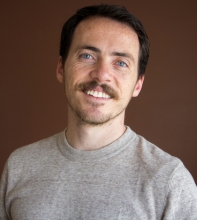MSE 298 Seminar: Materials Informatics - Moving Beyond Screening Via Generative Machine Learning Models

Abstract: Machine learning already enables the discovery of new materials by providing rapid predictions of properties to complement slower calculations and experiments. However, a persistent criticism of machine learning-enabled materials discovery is that new materials are very similar, both chemically and structurally, to previously known materials. This begs the question “Can machine learning ever learn new chemistries and families of materials that differ from those present in the training data?” In this talk, I will describe new generative-machine learning approaches that can be used to generate structures that do not yet exist, but are likely to. I will compare generative models including variational auto encoders, generative adversarial networks and diffusion models, which have become standard in machine learning for images. I will describe the unique challenges that we face when using tools of this nature to generate periodic crystalline structures, and I’ll also describe how tools such as DiSCoVeR andSMACT can be used in conjunction to ensure chemically reasonable, yet interesting outputs.
Bio: Taylor Sparks is an associate professor of materials science and engineering at the University of Utah and recently completed a sabbatical at the University of Liverpool with support from the Royal Society Wolfson Visiting Fellow program.He holds a bachelor's degree in materials science engineering from the University of Utah, master's degree in materials from UC Santa Barbara, and doctorate in applied physics from Harvard University. He was a recipent of the NSF CAREER Award and a speaker for TEDx Salt Lake City. He is active in MRS, TMS and ACERS societies and serves as an associate editor for the journals Computational Materials Science and Data in Brief. When he’s not in the lab, you can find him running his podcast “Materialism,” creating materials educational content for his YouTube channel, or canyoneering with his four kids in southern Utah.
Share
Related Content
| Attachment | Size |
|---|---|
| 2.64 MB |
Upcoming Events
-
MSE Special Seminar: Revolutionizing Battery Technology - Engineering Quantum Materials for Enhanced Safety and Performance in Solid Electrolytes
-
MSE Special Seminar: Designing Sustainable Soft Matter from the Molecule Up
-
EECS Seminar: On-device Contextual AI – Challenges and Opportunities
-
MAE 298 SEMINAR: Control and Estimation of Turbulent Shear Flows using Modal Analysis
-
MSE Special Seminar: Organic Semiconductor-incorporated Perovskites (OSIP) – A New Family of Hybrid
